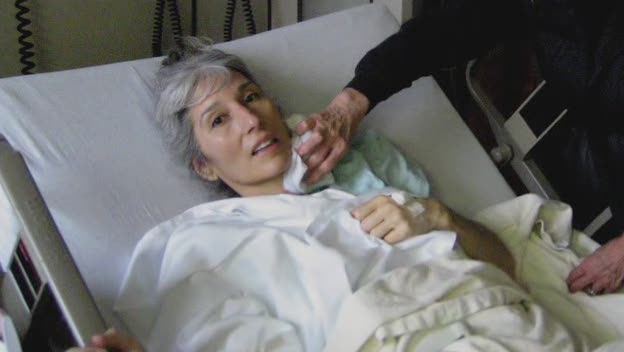Think about all of the things you have control over in your life: what you eat, what you wear, where you work, who you spend time with. Let’s face it – if any of these things displease us, we have ample opportunities to make changes so that we can be happy in our situation. There are so many aspects of our daily lives that we get to control, but what about the one moment in time that marks the end? The one moment in which all humans are equal: the moment of our death. We have no control over when and how it will happen, in most cases. We have no way to predict it, no way of knowing if it will be a sudden illness, an accident, or God forbid, at the hands of someone else. Will we go quickly and quietly, or will we suffer extensively?
I haven’t lived on this earth long nor have I experienced enough in this world to have come face to face with death very often. Those I have faced have been the culmination of chronic illness and a long, fulfilling life, like that of my grandfather, and my great grandmother; or they have been sudden, unreasonable tragedies, a youthful light in this world with much to look forward to, extinguished far too soon.
It starts with these facts: In 1994, Oregon became the first state to legally permit physician-assisted suicide. Only two other countries in the world allowed it at the time: Switzerland and the Netherlands.
Pause. Physician-assisted suicide? Like Kevorkian-style stuff?
Yes. Exactly.
While we, as Americans, are allowed to make lots of choices regarding our life, only in Oregon (at the time this film was released) are people legally allowed to choose the manner in which their life ends.
The film follows the stories of people affected by long term illness, mainly terminal cancer. After significant surgeries, chemotherapy, radiation, and other such measures to extend their lives and hopefully defeat the diseases they suffer with, they have come to a point of no return. Living in Oregon has given them the legal right to be prescribed a medication that will, when ingested, end their life in the most important way: on their own terms.
A cancer diagnosis doesn’t come with an exact expiration date, of when you may be in remission, when you might be free and clear of cancer entirely, or, sadly, when your life may be over. The not knowing is the hardest part: not knowing what kind of suffering you are in for; not knowing when you will lose control of bodily function and can’t walk, can’t eat, can’t communicate your wishes.
Of course this issue is an enormous political battle. The first rule of the Hippocratic Oath is that doctors are to do no harm, but by assisting with their suicide, doesn’t that mean the physician is harming the patient? When you think about the dignity with which we treat our pets, we seem to know when the best time is for them to go. If they are old, having trouble walking, aren’t eating, have lost control of bodily functions, we don’t want them to suffer anymore, and we choose to end their lives. Why can’t that same dignity be allotted to patients who have long suffered through a disease? Why should we allow someone who is chronically ill, incurable, in pain and discomfort in every waking moment of their life, to just continue to suffer and let nature take its course? In terms of legal policy, people fall on both sides of the fence. On the one hand, for a doctor to help kill a patient is inherently wrong. But those who have had first-hand experience of the suffering of loved ones who did not go quietly into that good night are strong supporters of the Death with Dignity Act.
 I guess I haven’t really reviewed this movie yet. Death isn’t something anyone is comfortable talking about, and watching the suffering on the screen of these different people, who actually existed, and who actually felt all of these emotions is absolutely gut-wrenching. This film gives an incredibly intimate look at the very end of their lives. While it is hard to watch, I think it’s an important film to watch. It inspires a dialogue, one that is wrought with painful emotions. But it’s the same kind of dialogue that is opened when a family member decides to register as an organ donor, or starts writing their last will and testament.
I guess I haven’t really reviewed this movie yet. Death isn’t something anyone is comfortable talking about, and watching the suffering on the screen of these different people, who actually existed, and who actually felt all of these emotions is absolutely gut-wrenching. This film gives an incredibly intimate look at the very end of their lives. While it is hard to watch, I think it’s an important film to watch. It inspires a dialogue, one that is wrought with painful emotions. But it’s the same kind of dialogue that is opened when a family member decides to register as an organ donor, or starts writing their last will and testament.
Tastefully and tactfully filmed and edited, this film is completely enthralling. You feel every powerful emotion right along with these terminally ill patients and their families. There is sadness in knowing the end is soon, but rejoice in knowing the end is coming at a time of the person’s choosing.
They are not pressured by their physicians, oncologists, or even their families to make this choice, and doctors are on hand in the moment of passing to make sure the patient is in a healthy state of mind to make this decision. This film embodies exactly what these people wanted with the end of their life: grace and dignity. It is stellar, thought-provoking, and overwhelmingly sad.
As of 2014, 3 states have made physician-assisted suicide legal, and 1 other has made it legal in conjunction with a court ruling. In the other 46 states, it is still illegal.




